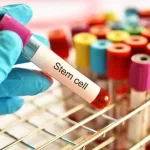Harnessing the Healing Power of “Smart” Stem Cells Derived From Human Fat
Recent research has uncovered a new type of smart stem cell known as Induced Multipotent Stem Cells (iMS), marking a significant step forward in the field of regenerative medicine. These iMS cells, derived from readily accessible human fat cells, have shown an impressive ability to adapt and transform in animal studies, thus demonstrating their potential for tissue repair1.
John Pimanda, a UNSW Medicine & Health professor, explains that iMS cells are unique in their ability to respond to their environment. The idea that stem cells can respond and adapt to their surroundings to repair various types of damaged tissue is novel, and could lead to a paradigm shift in stem cell research and treatment strategies1.
The Generation of Smart Stem Cells
Scientists created iMS cells by exposing human fat cells to a compound mixture, which triggered a process that resulted in the cells losing their original identity and behaving like smart stem cells. Interestingly, these reprogrammed cells remained dormant when injected into mice, until an injury occurred. Following an injury, the cells adapted and transformed into the required tissue for repair.
iMS Cells: Adaptive “Chameleons” of Regenerative Medicine
Here’s how these iMS cells are transformative in the field of regenerative medicine:
Responsive to Surroundings: iMS cells behave like chameleons, responding to local cues and seamlessly blending into the tissue that needs healing.
Unprecedented Abilities: Unlike other stem cell technologies, iMS cells aren’t limited in their regenerative abilities and do not carry risks such as tumor development.
Patient-specific: Since iMS cells are derived from the patient’s own tissue, they significantly reduce the risk of rejection.
Wide Adaptation: iMS cells derived from adult tissue have shown the ability to adapt to a wide range of tissue types in mice, making them a kind of “smart stem cell”.1
Transforming Adipocytes into Smart Stem Cells
The process of transforming adipocytes, or fat cells, into iMS cells is quite fascinating. It involves the use of azacitidine, a drug used in blood cancer therapy, and a naturally occurring growth factor that stimulates cell growth and tissue repair. Within approximately three and a half weeks of treatment, the cells shed their lipid content and lost their identity as fat cells.
The procedure includes incorporating a patient’s fat cells into a device to incubate with the compound or utilizing a mini pump in the body. The latter can theoretically be placed near the body part that needs repair, dispensing regulated doses to generate new, smart stem cells.
Translating Animal Studies to Human Therapies
Despite the exciting findings, transferring these results to human therapies requires extensive research, preclinical studies, and clinical trials to ensure safety and efficacy. The translation process can be a long one, potentially taking up to 15 years due to the inherent challenges and setbacks that may occur during rigorous medical research1.
In the world of histone modifications and CpG methylation, the adipocyte-derived iMS cells bear a strong resemblance to adipose tissue-derived mesenchymal stem cells. The similarities and differences between these cells could guide the direction of future research, helping us understand how these smart stem cells can be effective in clinical settings2.
Moreover, in a muscle injury model, iMS cells specifically contributed to satellite cells and myofibers without the formation of ectopic tissue, thereby revealing their context-dependent regenerative capacity without ectopic or neoplastic growth.
Looking Towards the Future of Regenerative Medicine
While we must stay realistic and mindful about the hurdles ahead, the introduction of iMS cells provides a promising new frontier in regenerative medicine. The discovery of these versatile cells, made from a patient’s own tissue, may indeed herald a new era of healing.
From the perspective of regenerative medicine, the potential benefits of iMS cells are many. They represent a significant step forward in the development of patient-specific therapies that can address a wide variety of health conditions. Additionally, the use of these cells could also minimize ethical concerns often associated with the use of embryonic stem cells.
The potential applications of iMS cells are vast. They could be used in the treatment of degenerative diseases like Parkinson’s and Alzheimer’s, injuries resulting from accidents or sports activities, and perhaps even aging-related ailments. With continued research, it’s possible that we could see the widespread use of these “smart” stem cells in clinical settings in the future.
In conclusion, while the journey to harness the full potential of iMS cells is long and fraught with challenges, the prospects they offer in regenerative medicine are too significant to be ignored. Their ability to respond and adapt to their environment to repair various types of damaged tissue marks a major breakthrough in the field. These adaptive “chameleons” of regenerative medicine, derived from a patient’s own fat cells, offer a promise of healing that is as personalized as it is revolutionary.
Sources
Landow, Sherry. “Scientists are a step closer to developing ‘smart’ stem cells – and they’re made from human fat.” Newsroom. January 14, 2021. https://newsroom.unsw.edu.au/news/health/scientists-are-step-closer-developing-smart-stem-cells-–-and-they’re-made-human-fat











